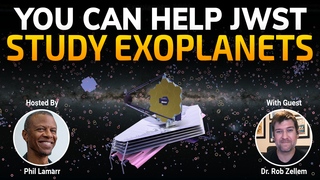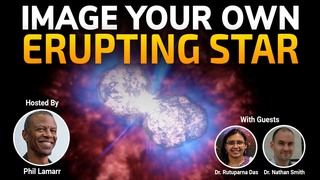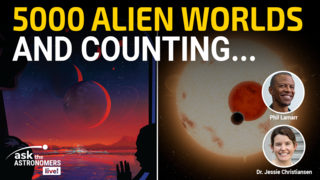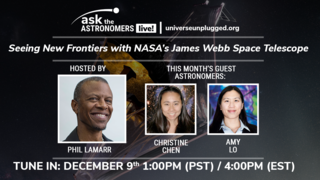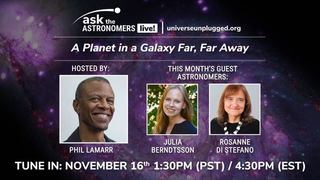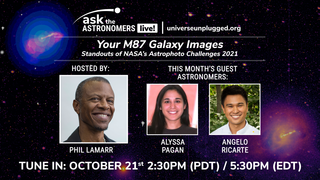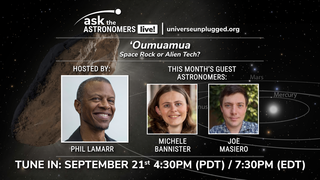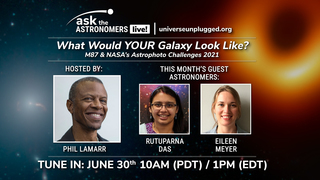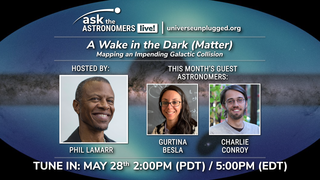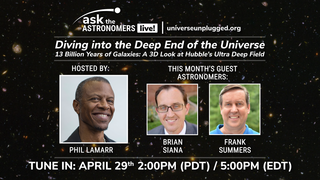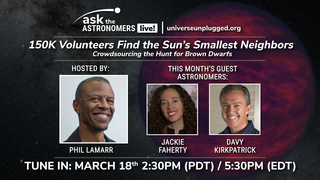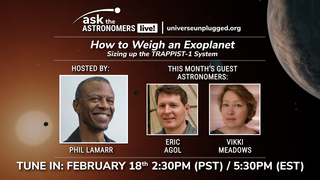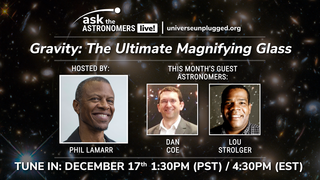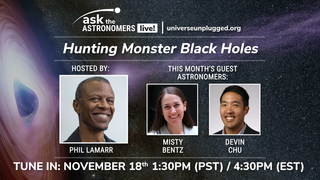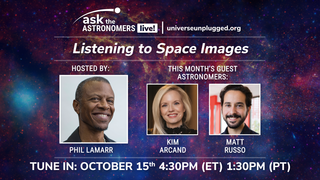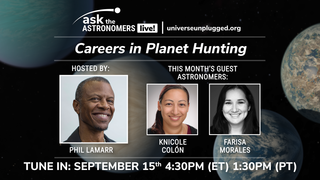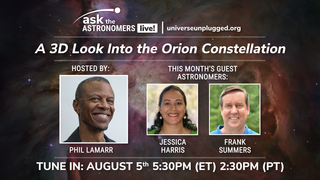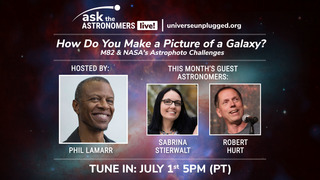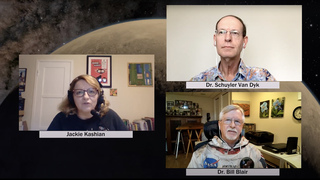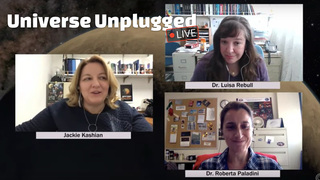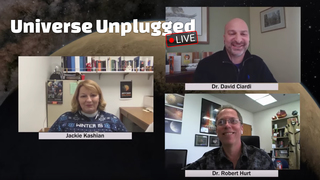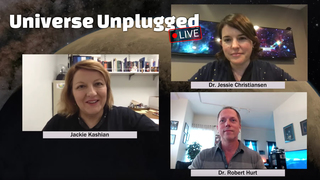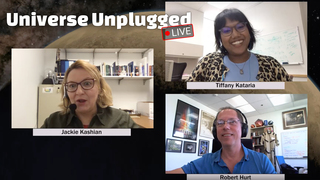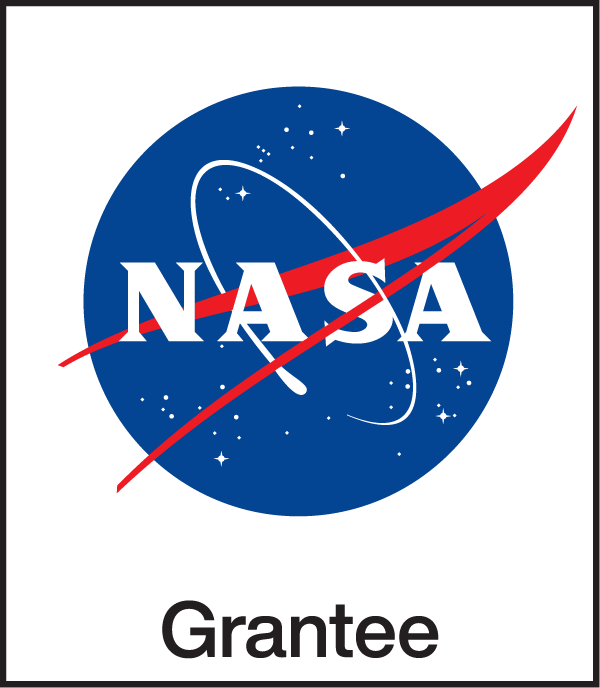Feedback for 'Oumuamua: Space Rock or Alien Tech?
By leaving feedback, you agree to allow NASA's Universe of Learning to publish the content and information you provide in your submission form. We will only use this information to recognize your entry on our series and social media, and we will never publish your email.
'Oumuamua: Space Rock or Alien Tech?
Live Chat
•
September 21st, 2021
In 2017 astronomers remarkably detected the first known example of an object originating from OUTSIDE of our solar system as it was briefly passing THROUGH our solar system. Originally designated 1I/2017, it was soon given the name ‘Oumuamua (pronounced oh MOO-uh MOO-uh), which is Hawaiian for “a messenger from afar arriving first,” or more simply, "scout.”
'Oumuamua received a lot of attention for being our first identified interstellar visitor, but over time speculations grew over whether it was just a space rock... or a piece of alien technology!
'Oumuamua was first identified in images taken by University of Hawaii’s Pan-STARRS1 telescope, funded by NASA’s Near-Earth Object Observations (NEOO) Program, which finds and tracks asteroids and comets in Earth’s neighborhood. Routine follow-up tracking showed the rapidly-moving body was not actually orbiting the Sun, but was on a trajectory originating from outside our solar system.
As if that was not enough to make headlines, 'Oumuamua had one more surprise for us. Astronomers saw its trajectory shift slightly on its way back out into interstellar space. Subtle "course changes" are not uncommon for small bodies in the solar system, particularly comets whose outgassing can act like naturally-occurring rocket engines.
However, this interstellar visitor did not show the usual characteristics of a comet, so explaining its unusual behavior has provided an interesting challenge to the astronomy community. Science is always exciting when faced with new and unexpected observations, and 'Oumuamua has provided a unique opportunity to explore a range of hypotheses, from the exotic to the fantastical.
In this edition of Ask the Astronomers Live, our guests will dig into the discovery and study of this amazing object as they help us understand what 'Oumuamua actually is.
Biographies of Show Participants
PHIL LAMARR (Host)
A Los Angeles native, Phil is an alumnus of Yale University and The Groundlings Theater and perhaps is best known as one of the original cast members of MAD TV, as “Hermes” on FUTURAMA, as "Marvin" in PULP FICTION, “Green Lantern” on JUSTICE LEAGUE and as the voice of SAMURAI JACK. For over 30 years Phil has thrilled audiences with his work on camera and behind the microphone on TV shows such as STATIC SHOCK, FAMILY GUY, STAR WARS: THE CLONE WARS, the CW’s THE FLASH & SUPERGIRL, GET SHORTY, LUCIFER and VEEP; feature films like MADAGASCAR 2, INCREDIBLES 2, and THE LION KING (2019) and video games including FORTNITE, SHADOW OF MORDOR, and the INJUSTICE, METAL GEAR SOLID, and the MORTAL KOMBAT series.
MICHELE BANNISTER (Astronomer)
Dr Michele Bannister is a planetary astronomer who specialises in the exploration and observation of small worlds in the Solar System and beyond, from trans-Neptunian worlds to interstellar objects. Originally from a small coastal town in north Taranaki, she received her B.Sc. Honours degree in astronomy and geology from the University of Canterbury in New Zealand in 2007. After a PhD at the Australian National University’s Mt Stromlo Observatory, she spent seven years as a postdoctoral fellow around the world, first working with the OSSOS survey out beyond Neptune at the University of Victoria and the National Research Council of Canada Herzberg in British Columbia, and then at the Astrophysics Research Centre of Queen's University Belfast in Northern Ireland. In 2020 she returned to Aotearoa and is now faculty at Te Kura Matū | the School of Physical and Chemical Sciences at the University of Canterbury, where she leads the UCNZ Planetary research group.
JOE MASIERO (Astronomer)
Dr. Joseph Masiero received his Bachelor's in Astronomy & Astrophysics from Penn State University in 2004, and his Doctorate in Astronomy from the Institute for Astronomy at the University of Hawaii, Manoa, in 2009. He is currently a Solar System Scientist at Caltech/IPAC, the Deputy Principal Investigator of the NEOWISE mission, and a member of the NEO Surveyor mission team. Dr. Masiero's research focuses on the physical and dynamical properties of near-Earth asteroids and Main Belt asteroids, with a special interest in the polarization of light reflected by these bodies.
